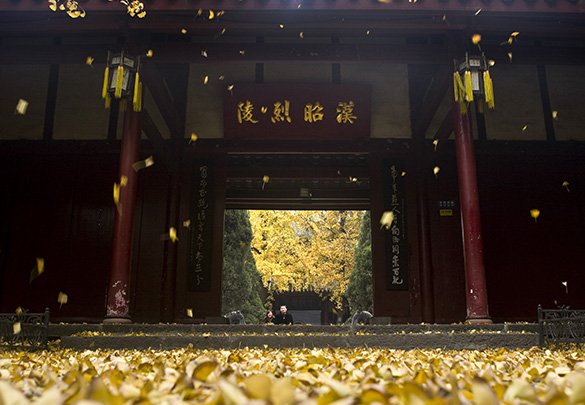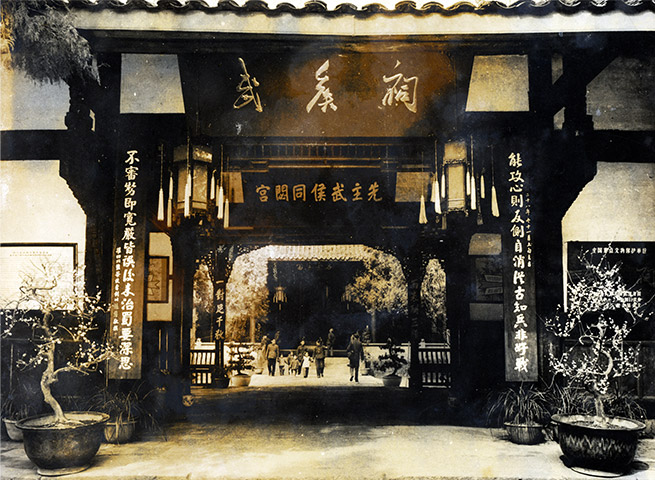The Three Kingdoms refer to the states of Wei, Shu and Wu
The state of Wei is also known as Cao Wei. In the year 220, Cao Pi crowned himself as the Wei emperor, with capital established in the city of Luoyang. In the year 265, Sima Yan overthrew the state of Wei and founded the state Jin.
The state of Shu proclaimed itself the legitimate successor of the Han dynasty, thus historically known as Shu Han. In 221 Liu Bei crowned himself the Shu emperor, with capital established in the city of Chengdu. In 263, Shu Han was conquered by the state of Cao Wei.
The state of Wu is also known as Sun Wu. It was founded by Sun Quan in 222, who crowned himself the Wu emperor in 229, with capital established in the city of Jianye (present-day Nanjing of Jiangsu Province). In 280, Wu was conquered by the State of Western Jin.
-
184 ADfirst year of the Zhongping Era under the reign of Emperor Ling of Eastern Han,the Yellow Turban Rebellion erupted97280 ADfirst year of the Taikang Era under the reign of Emperor Wu of Western Jin, the state of Wu was conquered by the State of Western Jin.
-
189 ADEmperor Xian of Eastern Han ascended to the throne after the death of Emperor Ling92280 ADfirst year of the Taikang Era under the reign of Emperor Wu of Western Jin, the state of Wu was conquered by the State of Western Jin.
-
220 ADthe state of Wei was founded and Cao Pi forced Emperor Xian to abdicate his throne as the last emperor of the Han dynasty61280 ADfirst year of the Taikang Era under the reign of Emperor Wu of Western Jin, the state of Wu was conquered by the State of Western Jin.



 The Chengdu Wuhou Shrine was constructed as a temple to commemorate Liu Bei, his chancellor Zhuge Liang and other eminent Shu Han figures. Its existence originates from the first year of the Zhangwu Era under the reign of Emperor Zhaolie (Liu Bei) of Shu Han (221), when Liu Bei's Hui Mausoleum was being built, together with the Hanzhaolie Temple. Around 500 AD during the period of the Northern and Southern dynasties, Wuhou Shrine relocated from the "Shaocheng City" of Chengdu to a site next to Hui Mausoleum and Hanzhaolie Temple, which was a move that lasted up to the Ming dynasty. During the 23rd year of the Hongwu Era (1390) under the reign of Emperor Hongwu of Ming, when Zhu Chun, the Prince Shuxian of Ming, came to the temple to pay homage, he decided to unify Hui Mausoleum, Hanzhaolie Temple and Wuhou Shrine together for the reason that "lord and ministers are suitable to be one". Since the magnificence of Zhuge Liang overshadows that of Liu Bei in the hearts of many common folks, in general the complex is referred to as "Wuhou Shrine". Toward the end of the Ming dynasty, Wuhou Shrine was destroyed in war, and then reconstructed during the 10th year of the reign of Emperor Kangxi of Qing Dynasty (1671), the outcome of which has been preserved to this day. In 1961, Wuhou Shrine was announced by the State Council as the first batch of key cultural relics protection units in China. In 1984 the museum of Wuhou Shrine was established, and in 1997 Sanyi Temple was wholly relocated to the Wuhou Shrine complex. In 2003 the Chengdu Nanjiao Park was incorporated as a part of shrine grounds, later in October 2004 the Jinli pedestrian zone began operation. In 2008 Wuhou Shrine was elevated in status as a National Grade I Museum, and in January 2009 the second phase of Jinli was opened to the public. Occupying 150,000 square meters (230 mu), the shrine complex is made up of three main sections including the Three Kingdoms Cultural Relics Preservation Zone, Three Kingdoms Culture Experience Zone (i.e., The West Zone, which is the former Chengdu Nanjiao Park) and the Jinli Folk Customs Zone. Wuhou Shrine is known as the "mecca of the Three Kingdoms" for it is China's only shrine where emperor and ministers are enshrined together, the most venerated memorial of Zhuge Liang, Liu Bei and other important Shu Han individuals, and the world's most influential Three Kingdoms relics museum. The average annual number of visitors received at the Wuhou Shrine reaches approximately ten million person-times.
The Chengdu Wuhou Shrine was constructed as a temple to commemorate Liu Bei, his chancellor Zhuge Liang and other eminent Shu Han figures. Its existence originates from the first year of the Zhangwu Era under the reign of Emperor Zhaolie (Liu Bei) of Shu Han (221), when Liu Bei's Hui Mausoleum was being built, together with the Hanzhaolie Temple. Around 500 AD during the period of the Northern and Southern dynasties, Wuhou Shrine relocated from the "Shaocheng City" of Chengdu to a site next to Hui Mausoleum and Hanzhaolie Temple, which was a move that lasted up to the Ming dynasty. During the 23rd year of the Hongwu Era (1390) under the reign of Emperor Hongwu of Ming, when Zhu Chun, the Prince Shuxian of Ming, came to the temple to pay homage, he decided to unify Hui Mausoleum, Hanzhaolie Temple and Wuhou Shrine together for the reason that "lord and ministers are suitable to be one". Since the magnificence of Zhuge Liang overshadows that of Liu Bei in the hearts of many common folks, in general the complex is referred to as "Wuhou Shrine". Toward the end of the Ming dynasty, Wuhou Shrine was destroyed in war, and then reconstructed during the 10th year of the reign of Emperor Kangxi of Qing Dynasty (1671), the outcome of which has been preserved to this day. In 1961, Wuhou Shrine was announced by the State Council as the first batch of key cultural relics protection units in China. In 1984 the museum of Wuhou Shrine was established, and in 1997 Sanyi Temple was wholly relocated to the Wuhou Shrine complex. In 2003 the Chengdu Nanjiao Park was incorporated as a part of shrine grounds, later in October 2004 the Jinli pedestrian zone began operation. In 2008 Wuhou Shrine was elevated in status as a National Grade I Museum, and in January 2009 the second phase of Jinli was opened to the public. Occupying 150,000 square meters (230 mu), the shrine complex is made up of three main sections including the Three Kingdoms Cultural Relics Preservation Zone, Three Kingdoms Culture Experience Zone (i.e., The West Zone, which is the former Chengdu Nanjiao Park) and the Jinli Folk Customs Zone. Wuhou Shrine is known as the "mecca of the Three Kingdoms" for it is China's only shrine where emperor and ministers are enshrined together, the most venerated memorial of Zhuge Liang, Liu Bei and other important Shu Han individuals, and the world's most influential Three Kingdoms relics museum. The average annual number of visitors received at the Wuhou Shrine reaches approximately ten million person-times.












